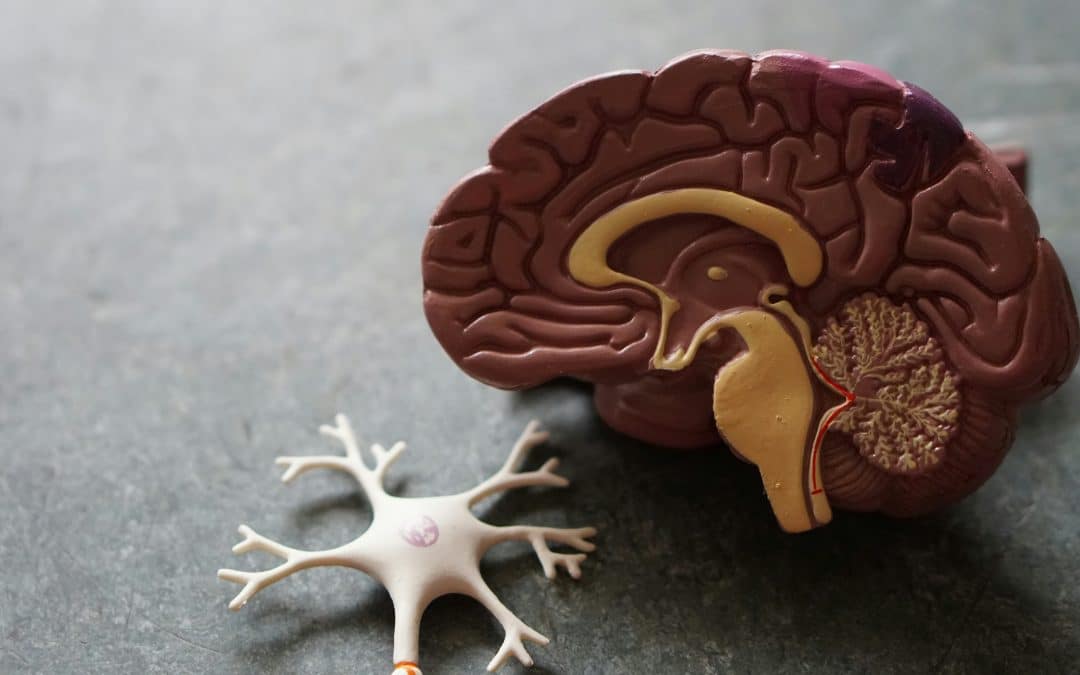The profound connection between our gut and brain has long captivated researchers, unveiling an intricate system of communication that influences many aspects of our well-being. This back and forth dialogue, known as the gut-brain axis, is facilitated by an intricate network of neural pathways, hormonal signals, and the gut microbiome. This relationship is how the feeling in your gut can influence your decision-making and leads to “going with your gut”.
Evolutionary Roots
Our brain and digestive system have evolved in tandem, forging an intimate partnership to ensure our survival. The acquisition of nutrients has been a perpetual challenge throughout human history, necessitating a close collaboration between these two vital systems. Furthermore, the ability to detect and respond to potentially harmful substances ingested was paramount, prompting the development of an intricate alarm system governed by specific centers of our brain.
This alarm system heightens our awareness of physical sensations in the gut, amplifying their intensity and eliciting emotional responses. Conversely, emotional states can profoundly influence our gut function, creating a feedback loop that underscores the deep interconnectedness of these systems.
Multifaceted Influence
The gut-brain axis exerts its influence over a multitude of bodily functions, extending far beyond digestion and nutrient absorption. Studies suggest that this intricate communication network plays a pivotal role in regulating:
- Hunger and satiety cues
- Food preferences and cravings
- Gut motility and muscle contractions
- Metabolism and energy utilization
- Mood and emotional well-being
- Cognitive function and behavior
- Stress response and pain sensitivity
- Immune system modulation
This multifaceted system highlights the intricate interplay between our gut, brain, and overall physiological and psychological health.
Key Players in the Gut-Brain Axis
The gut-brain axis is a symphony conducted by several key anatomical structures, each playing a vital role in facilitating this intricate communication network.
Enteric Nervous System: The “Second Brain”
Often referred to as the “second brain,” the enteric nervous system is a vast neural network comprising over 500 million neurons embedded within the walls of the gastrointestinal tract. It is a specialized division of the autonomic nervous system, responsible for regulating the automatic functions of our internal organs. This intricate system can operate independently from the central nervous system, gathering information about the gut’s internal environment, processing it locally, and generating appropriate responses without input from the brain.
Vagus Nerve: The Neural Highway
The vagus nerve serves as the primary conduit linking the enteric nervous system to the brain. As one of the twelve cranial nerves, it originates in the cranium and extends throughout the body, branching out to various organs along its path. This neural highway conveys sensory information from the gut’s internal environment to the brain while relaying motor signals in response, facilitating a continuous exchange of information.
The vagus nerve mediates a range of reflexes known as vagal reflexes, which operate within the gut in response to changing conditions, such as chemical alterations or the presence of food. These reflexes can function within the enteric nervous system or through communication with the central nervous system, underscoring the vagus nerve’s pivotal role in facilitating the gut-brain axis.
Gut Microbiome: The Enigmatic Orchestrator
Remarkably, the bacteria residing within our gut play a vital role in shaping the gut-brain axis. These microbial inhabitants produce or contribute to the production of numerous chemical neurotransmitters that convey messages between the gut and brain. Additionally, they generate other chemical compounds that can influence brain function through the bloodstream.
This intricate relationship is bidirectional, as the brain and gut can also modulate the gut microbiome’s environment, influencing its composition and activity. Recent studies have shed light on the potential involvement of the gut microbiome in various neurological, mental health, and functional gastrointestinal disorders, underscoring its profound impact on our overall well-being [1,2].
Pathways of Communication
The gut-brain axis facilitates communication through a multitude of pathways, each contributing to this dynamic interplay.
Neural Pathways: The Vagus Nerve and Beyond
The vagus nerve serves as the primary neural conduit for gut-brain communication, conveying sensory information from the enteric nervous system to the brain’s higher emotional processing centers. However, the vagus nerve does not directly interact with the gut microbiome. Instead, evidence suggests that it can sense microbial signals in the form of bacterial metabolites or through the modulation of enteroendocrine and enterochromaffin cells in the gut epithelium [1,2].
Additionally, the enteric nervous system can directly influence the gut microbiome’s composition through alterations in secretion, motility, permeability, and immunological defenses, further highlighting the intricate interplay between these systems.
Immune Signaling: The Gut-Brain-Immune Axis
The gut microbiome plays a pivotal role in maintaining the delicate balance between tolerating our “good” microorganisms and protecting the body from the “bad” pathogenic invaders. This balance is mediated by immune cells and their receptors which serve as sensors for microbial components.
Bacteria can release immune agonists into the bloodstream, where they can access the brain and influence various processes which have been implicated in neurological disorders like Alzheimer’s disease and Parkinson’s disease. Conversely, diet-induced changes in the gut microbiome can compromise the intestinal barrier, leading to immune activation and the release of inflammatory mediators into the systemic circulation, a phenomenon known as metabolic endotoxemia [1,2].
Microbial Metabolites: Chemical Messengers
The gut microbiome produces a diverse array of metabolites that can modulate both the enteric nervous system and central nervous system functions. Among these, short-chain fatty acids (SCFAs) play a crucial role, acting through free fatty acid receptors on various cell types in the gut, immune system, and nervous system.
SCFAs can influence gut motility, secretion, and gut-brain signaling, while also exerting central effects on the stress response and neurotransmitter synthesis. Additionally, the gut microbiome can influence serotonin production and tryptophan metabolism, which have profound implications for brain function, mood, and behavior [1-3].
Gut-Brain Axis Disorders
Disruptions in the delicate balance of the gut-brain axis have been implicated in a wide range of medical conditions and symptoms, underscoring the profound impact of this intricate communication network.
Functional Gastrointestinal Disorders
Functional gastrointestinal disorders, such as irritable bowel syndrome (IBS), are characterized by persistent symptoms without an apparent physical cause. These conditions often overlap with mental health disorders like anxiety and depression, highlighting the intricate interplay between gut and brain function.
In IBS, alterations in gut microbial community composition have been observed, with some studies suggesting the presence of distinct IBS subgroups based on microbial profiles. Additionally, serotonin signaling dysregulation has been implicated in IBS pathophysiology, further emphasizing the gut-brain axis’s role in this condition.
Mental Health and Neurodevelopmental Disorders
The gut-brain axis has been implicated in various mental health conditions, including anxiety and depressive disorders and some probiotics have been shown to alleviate depressive symptoms [3]. Cross-sectional studies have revealed associations between altered gut microbiome composition and these disorders, with some animal models demonstrating the potential for microbiome transfer to induce behavioral changes.
Furthermore, emerging evidence suggests a potential link between gut microbiome disruptions and neurodevelopmental disorders like autism spectrum disorders, as well as neurodegenerative conditions such as Parkinson’s and Alzheimer’s diseases [1,2].
Chronic Pain and Stress-Related Disorders
Chronic pain and stress-related disorders have also been associated with dysregulation of the gut-brain axis. The communication between the gut and brain can amplify pain perception and exacerbate stress responses, creating a vicious cycle that perpetuates these conditions. Moreover, the gut microbiome has been implicated in the modulation of pain sensitivity and stress response, further highlighting the intricate interplay between these systems and the potential for targeted interventions.
Nurturing the Gut-Brain Axis
While targeted interventions hold promise, nurturing the gut-brain axis can also be achieved through lifestyle modifications, particularly through diet and stress management.
Dietary Approaches
Maintaining a balanced diet rich in whole foods and emphasizing plant-based sources can have a significant effect on gut health and, consequently, brain function. Key dietary considerations include:
- Fiber: Soluble and insoluble fibers found in plant-based foods help maintain regular bowel movements and feed beneficial gut bacteria.
- Prebiotics and probiotics: Fermented foods like yogurt and sauerkraut provide live probiotics, while fibers and complex starches act as prebiotics, nourishing the gut microbiome. In fact, there are some probiotics that can influence the brain and have been termed psychobiotics [4].
- Antioxidants: Fruits and vegetables are rich in antioxidants, which help combat inflammation and support overall gut health.
- Anti-inflammatory foods: A whole-food, plant-rich diet is naturally anti-inflammatory, reducing sugar, additives, and cholesterol, and promoting a healthy gut environment.
By embracing a diverse, nutrient-dense diet, individuals can support a thriving gut microbiome and potentially enhance the gut-brain axis’s function.
Stress Management Strategies
Chronic stress can disrupt the delicate balance of the gut-brain axis. Incorporating stress management techniques into daily routines can help mitigate these effects and promote overall well-being. Some effective strategies include:
- Mindfulness and meditation practices
- Regular physical exercise
- Adequate sleep and rest
- Engaging in enjoyable hobbies and activities
- Seeking social support and fostering healthy relationships
By actively managing stress levels, individuals can potentially alleviate the burden on the gut-brain axis and promote a harmonious interplay between these vital systems.
Final Thoughts
The gut-brain axis represents a fascinating tapestry of communication, intricately woven by neural pathways, immune signals, and microbial metabolites. From shaping neurodevelopment and modulating mood to influencing digestive function and pain perception, the gut-brain axis emerges as a pivotal player in a myriad of physiological and psychological processes.
As we continue to unravel the intricacies of the gut-brain axis, we unlock the potential to revolutionize our understanding of human health and unlock new frontiers in personalized medicine, where the harmonious symphony of our gut and brain takes center stage.
Sources
[1] Martin, C. R., Osadchiy, V., Kalani, A., & Mayer, E. A. (2018). The Brain-Gut-Microbiome Axis. Cellular and molecular gastroenterology and hepatology, 6(2), 133–148. https://doi.org/10.1016/j.jcmgh.2018.04.003
[2] Margolis, K.G., Cryan, J.F., and Mayer, E.A. (2021). The Microbiota-Gut-Brain Axis: From Motility to Mood. Gastroenterology, 160(5), 1486-1501. https://doi.org/10.1053/j.gastro.2020.10.066
[3] Akkasheh, G., Kashani-Poor, Z., Tajabadi-Ebrahimi, M., Jafari, P., Akbari, H., Taghizadeh, M., Memarzadeh, M. R., Asemi, Z., & Esmaillzadeh, A. (2016). Clinical and metabolic response to probiotic administration in patients with major depressive disorder: A randomized, double-blind, placebo-controlled trial. Nutrition (Burbank, Los Angeles County, Calif.), 32(3), 315–320. https://doi.org/10.1016/j.nut.2015.09.003
[4] Dinan, T. G., Stanton, C., & Cryan, J. F. (2013). Psychobiotics: a novel class of psychotropic. Biological psychiatry, 74(10), 720–726. https://doi.org/10.1016/j.biopsych.2013.05.001
https://my.clevelandclinic.org/health/body/the-gut-brain-connection
https://www.healthline.com/nutrition/gut-brain-connection
https://www.psychologytoday.com/us/basics/gut-brain-axis
https://dhwblog.dukehealth.org/understanding-the-basics-of-the-gut-brain-connection/






